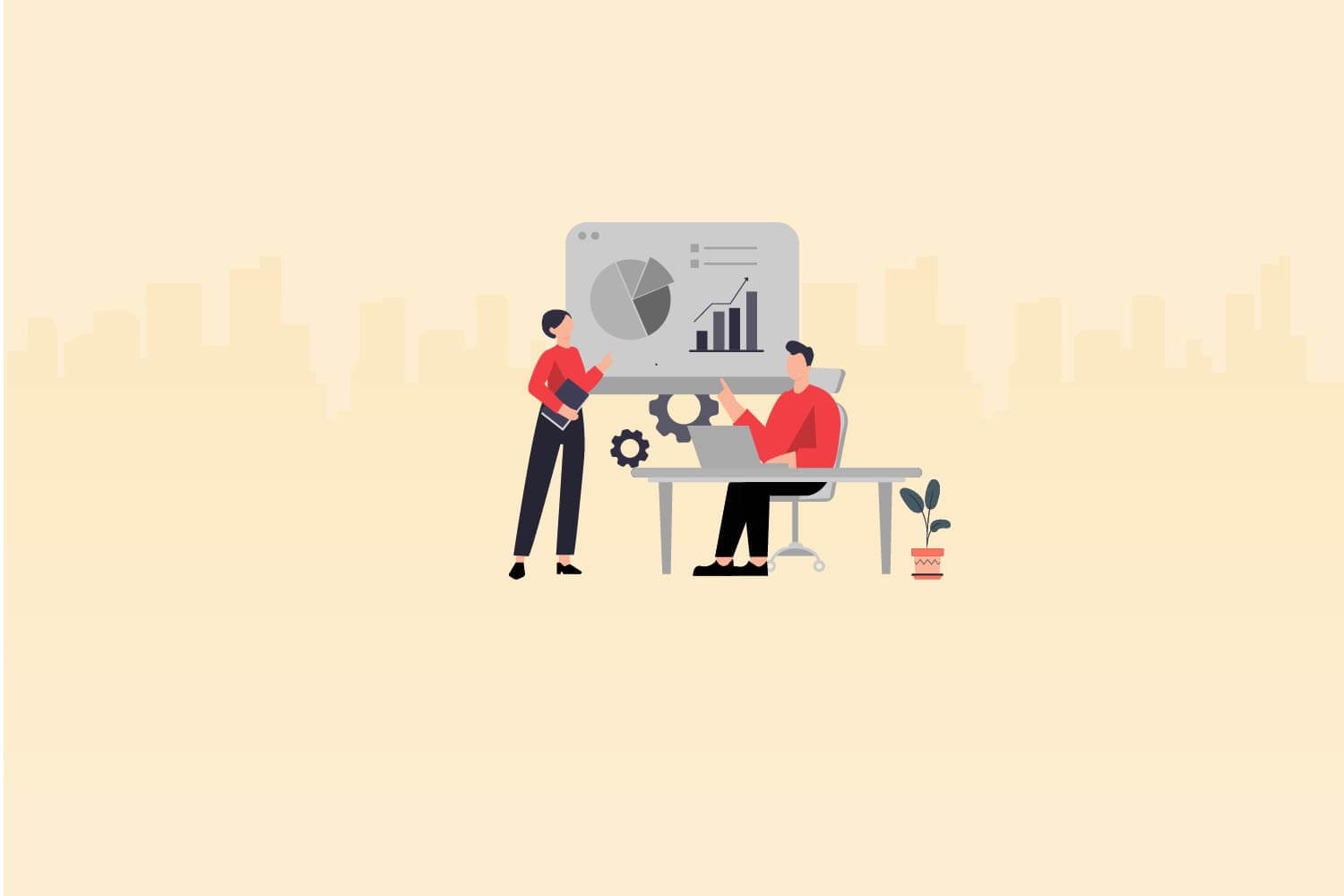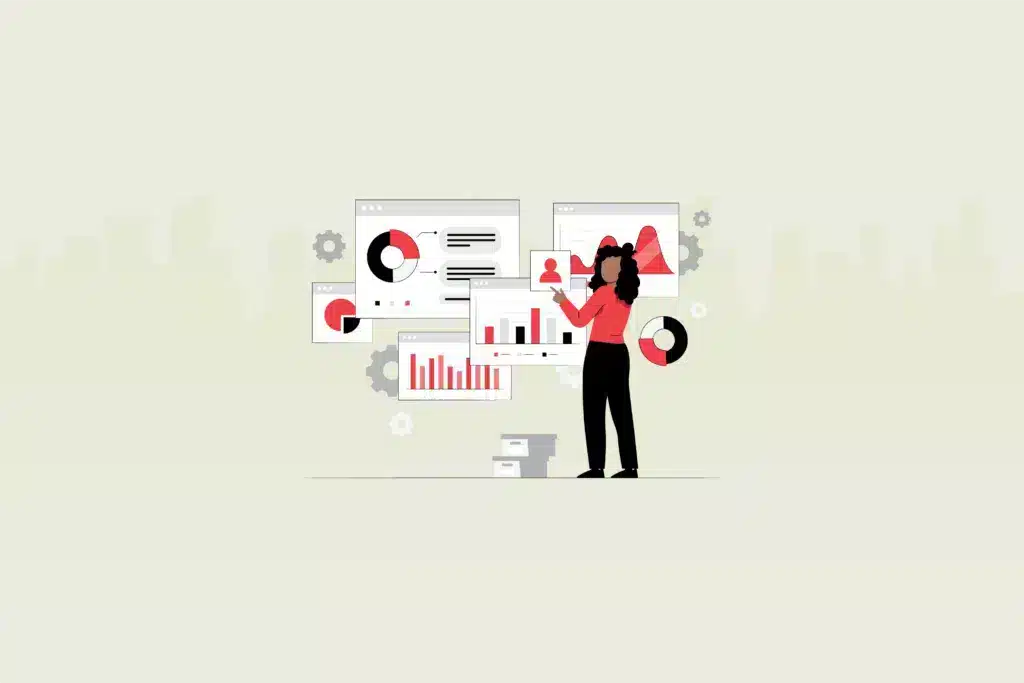In today’s dynamic and competitive business landscape, the growth and success of your company heavily depend on the skills and knowledge of your workforce. Recruiting top talent is just the first step; nurturing and retaining that talent is equally crucial. For recruiters, founders, and hiring managers, this means going beyond the initial onboarding process and actively investing in the ongoing development of your employees.
According to Workramp, 69% of companies have increased employee development
Creating a learning and development plan tailored to your team’s needs not only boosts their individual growth but also strengthens your organization as a whole. In this comprehensive guide, we will explore the essential steps to design and implement effective learning and development strategies. Whether you’re a recruiter striving to attract the best candidates, a founder looking to foster innovation and growth, or a hiring manager committed to workforce retention, this blog will provide valuable insights on how to drive excellence through employee development.
Join us as we delve into the art of crafting learning and development plans that empower your team to thrive, equipping them with the skills and knowledge needed to conquer the challenges of today and seize the opportunities of tomorrow. Your employees are your most valuable asset, and by the end of this read, you’ll be well-equipped to unleash their full potential.
Assess individual and organizational needs
Understanding where your employees currently stand in terms of skills, knowledge, and career aspirations is the foundation of a successful learning and development plan. As a recruiter, founder, or hiring manager, you need to recognize that one size does not fit all. Each member of your team brings a unique set of strengths and areas for improvement, and their growth should be tailored to these specific attributes.
Start by conducting regular performance reviews and skill gap assessments. This means having open and constructive conversations with your employees to identify their goals, challenges, and aspirations. Ask questions like, “Where do you see yourself in the company in the next few years?” and “What skills or knowledge do you believe are critical for your success?” By engaging in these discussions, you not only gain insights into their individual needs but also demonstrate your commitment to their professional growth.
Simultaneously, it’s essential to align these individual needs with the broader organizational goals. What skills and competencies are required to advance the company’s mission and vision? Identifying these objectives allows you to create learning and development plans that not only enhance employee performance but also contribute to the overall success of your organization.
The key to effective assessment lies in a blend of quantitative and qualitative data. Performance metrics, feedback from peers and supervisors, and self-assessment can all provide valuable insights. These evaluations should be ongoing, as employee needs and company goals evolve over time.
In summary, the first step in crafting a successful learning and development plan is understanding the unique needs of your employees and aligning them with the strategic objectives of your organization. It’s a holistic approach that sets the stage for a win-win scenario: your team members flourish in their careers while your company advances toward its goals. This is just the beginning of our journey to unlocking the full potential of your team through robust development plans. In the next sections, we’ll explore how to set clear objectives and choose appropriate training methods to support your employees on their growth path.
Set clear objectives for learning and development
Once you’ve assessed the unique needs and aspirations of your employees and aligned them with your organizational goals, the next crucial step in crafting an effective learning and development plan is setting clear objectives. Objectives serve as the guiding star for both the individual employee and the company, providing a roadmap for skill acquisition and career growth.
Clarity is paramount. Each learning objective should be specific, measurable, achievable, relevant, and time-bound (SMART). This approach ensures that both the employee and the organization can track progress and success. For example, instead of a vague objective like “Improve communication skills,” a SMART objective might be “Complete a communication workshop and increase the number of successful client interactions by 20% within the next six months.” This not only articulates the goal clearly but also provides a timeline for achieving it.
Moreover, it’s essential to have these objectives directly relate to the employee’s job role and responsibilities. This alignment ensures that the skills gained will be immediately applicable and beneficial in the workplace. By focusing on job-specific goals, you’re not only investing in your employees’ personal development but also enhancing their ability to contribute to the success of your organization.
Clear objectives also foster motivation. When employees have a well-defined path for their professional development, they are more likely to stay engaged and committed to their growth. It provides a sense of purpose and achievement. Furthermore, setting objectives that are linked to career advancement or promotions can serve as a powerful incentive for employees to excel.
In summary, setting clear, SMART objectives is a crucial element of creating a robust learning and development plan. These objectives not only provide direction but also help in measuring progress and success. By aligning these objectives with job responsibilities and career advancement opportunities, you empower your employees to take ownership of their growth, while simultaneously enhancing their contributions to your organization’s success. This is just one piece of the puzzle in our journey to creating comprehensive development plans that drive excellence. In the following sections, we’ll explore the selection of appropriate training methods and the provision of ongoing support and resources.
Select appropriate training methods
Choosing the right training methods is a pivotal aspect of creating a learning and development plan that resonates with your employees and drives effective skill acquisition. One size does not fit all, and the methods you select should be tailored to the needs, preferences, and learning styles of your team members.
First, consider the variety of training methods available. Traditional classroom-style training, online courses, workshops, on-the-job training, mentoring, and coaching are just a few examples. The decision should be based on the nature of the skills or knowledge to be acquired. For instance, if your team needs technical skills, online courses or workshops might be suitable. However, for soft skills or leadership development, mentorship programs and coaching could be more effective.
Understanding the preferred learning styles of your employees is also crucial. Some may thrive in a structured classroom environment, while others prefer self-paced online courses. Tailor your approach to accommodate these preferences whenever possible, as it enhances engagement and retention.
Moreover, consider the practicality and scalability of the training methods you choose. Can the methods be easily integrated into the employees’ daily work routines? Are they cost-effective and sustainable over the long term? These questions are particularly pertinent for founders and hiring managers who must ensure that the chosen training methods align with the company’s resources and growth trajectory.
The blend of training methods can also be beneficial. A combination of approaches often proves more effective in creating well-rounded development plans. For instance, an employee could start with an online course to acquire foundational knowledge and then follow up with hands-on training or mentorship for practical application.
In summary, selecting the appropriate training methods is an essential part of creating a learning and development plan. It’s about tailoring the methods to the skills and learning preferences of your employees while keeping scalability and practicality in mind. A well-rounded approach ensures that employees not only acquire knowledge but can also apply it effectively in their roles. This is one more step in our journey to crafting comprehensive development plans. In the next section, we’ll explore how to provide ongoing support and resources to bolster your employees’ growth journey.
Provide ongoing support and resources
Creating a learning and development plan is not a one-time endeavor. To ensure its success and sustainability, ongoing support and resources are essential. This support demonstrates your commitment to your employees’ growth and empowers them to reach their full potential.
One critical aspect of ongoing support is mentorship and coaching. Pairing employees with experienced mentors or coaches can significantly enhance their development journey. These mentors can provide guidance, share insights, and offer real-world experience, which is invaluable for skill acquisition. They can also serve as motivators and role models, inspiring employees to strive for excellence.
Resources play a vital role in supporting learning and development. Ensure that your employees have access to the tools and materials needed to pursue their development goals. This can include access to libraries, online courses, workshops, or software. Investing in such resources not only equips your employees but also signals your organization’s commitment to their growth.
Encourage a culture of continuous learning within your organization. This includes promoting knowledge-sharing among employees, creating opportunities for cross-functional learning, and recognizing and celebrating individual and team achievements. A culture of learning fosters engagement and innovation, which can directly impact the company’s success.
Regular feedback and check-ins are crucial for tracking progress and addressing challenges. Provide a platform for employees to discuss their development plans, share their experiences, and receive feedback from supervisors and mentors. This open communication fosters a sense of belonging and ensures that the learning and development plan remains relevant and adaptable.
In summary, providing ongoing support and resources is an integral part of creating a learning and development plan that truly empowers your employees. It’s about nurturing a culture of learning and providing the necessary tools, guidance, and encouragement to ensure that your team members thrive. This support not only benefits individuals but contributes to the collective success of your organization. As we continue our exploration of comprehensive development plans, the next section will delve into the importance of measuring and adapting to ensure long-term effectiveness.
Measure and adapt
Creating a learning and development plan is just the beginning; to ensure its long-term effectiveness, it’s crucial to measure progress and be willing to adapt as necessary. This step is vital for recruiters, founders, and hiring managers as it helps assess the impact of the plan on employee growth and the organization’s success.
Key performance indicators (KPIs) play a central role in measuring the effectiveness of your development plan. These KPIs should be aligned with the objectives set earlier in the process. For example, if the objective was to improve customer satisfaction, the KPI could be the number of positive customer feedback received or increased customer retention rates. Regularly tracking these indicators provides a clear picture of how well your employees are progressing.
Feedback, both from employees and supervisors, is invaluable in the measurement process. Encourage open and honest communication about the effectiveness of the plan, and use this feedback to make adjustments. This not only ensures that the plan remains relevant but also fosters a sense of collaboration and employee engagement.
Be prepared to adapt the plan based on the results and feedback. If certain aspects of the plan are not delivering the expected outcomes, consider alternative methods or additional resources. If new skills become necessary due to industry changes or company growth, incorporate them into the plan. The ability to adapt demonstrates your commitment to your employees’ success and your organization’s ability to stay agile and competitive.
The measurement and adaptation process should be ongoing. Regularly scheduled reviews, perhaps on a quarterly or semi-annual basis, provide the opportunity to make necessary adjustments and set new objectives. This iterative approach ensures that your learning and development plan evolves alongside your organization’s needs and goals.
In conclusion, measuring and adapting are essential steps in creating a dynamic and effective learning and development plan. It allows you to gauge progress, make necessary adjustments, and ensure that your employees continue to grow and excel in their roles. It’s a continuous cycle that contributes to the long-term success of your organization and the development of your team members. This marks the end of our journey through the essential elements of crafting comprehensive development plans for your employees. By following these steps, you can empower your team to reach their full potential and, in turn, drive your organization to new heights.
Conclusion
In the dynamic world of business, the success of your organization is intrinsically tied to the growth and potential of your workforce. As recruiters, founders, and hiring managers, you hold the keys to nurturing this potential and guiding it toward excellence. Crafting a learning and development plan tailored to your employees is not just a strategic move; it’s an investment in the future of your company.
Throughout this journey, we’ve explored the essential elements of creating robust development plans that empower your team to thrive and, simultaneously, contribute to your organization’s success. We began by emphasizing the importance of assessing both individual and organizational needs. Recognizing the unique strengths, aspirations, and skill gaps of your employees and aligning them with your company’s mission sets the foundation for a successful plan.
We then delved into the significance of setting clear, SMART objectives. Objectives that are specific, measurable, achievable, relevant, and time-bound provide the guidance necessary for employees to navigate their professional development journey effectively.
Selecting the right training methods that cater to your employees’ needs and learning styles was the next crucial step. A tailored approach ensures that skills are acquired in a manner that resonates with individual preferences, maximizing engagement and retention.
The provision of ongoing support and resources cannot be overstated. Mentorship, resources, and a culture of learning are the pillars that uphold the growth of your employees. They are the channels through which skills are honed, and motivation is kindled.
Finally, we explored the importance of measuring and adapting. This continuous process helps gauge the progress of your development plan, allowing you to make informed decisions and refine your strategies. It ensures that your plan remains relevant and dynamic, just as the business world itself.
In a fast-paced and competitive landscape, your employees are your most valuable asset. By following these steps, you can empower them to reach their full potential and, in turn, drive your organization to new heights. It’s a journey of mutual growth, where success is shared between the individual and the company.
Remember that learning and development is not a one-time project, but a continuous commitment. As you implement these strategies, you’ll witness the transformation of your employees into highly skilled, motivated, and loyal contributors to your organization’s mission. The investment you make today in their growth will yield substantial returns in the form of innovation, productivity, and long-term success. So, embrace the journey of empowering excellence through learning and development, and watch your team and organization flourish.
Optimize your hiring process with Testlify: No 1 talent assessment tool. Sign up for free to check out our test library and pricing.








